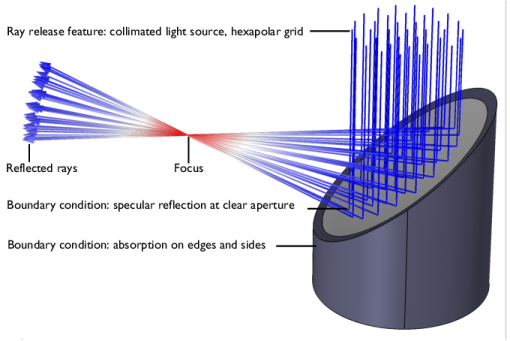|
•
|
A study is necessary to compute the ray paths. The Geometrical Optics interface is compatible with the Time Dependent, Ray Tracing, and Bidirectionally Coupled Ray Tracing study steps. Ray Tracing is recommended for most models. See Analysis Types for more information.
 |